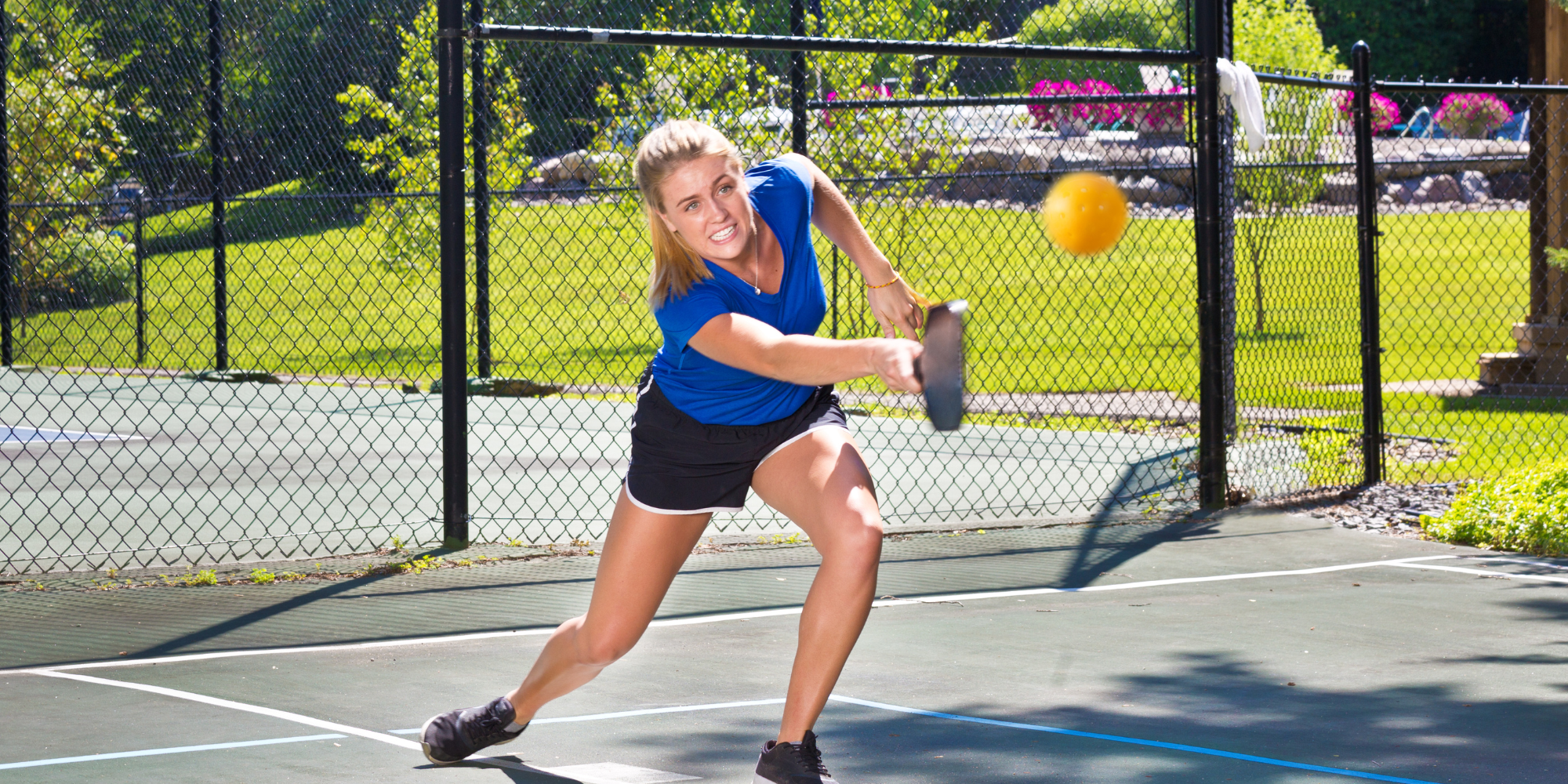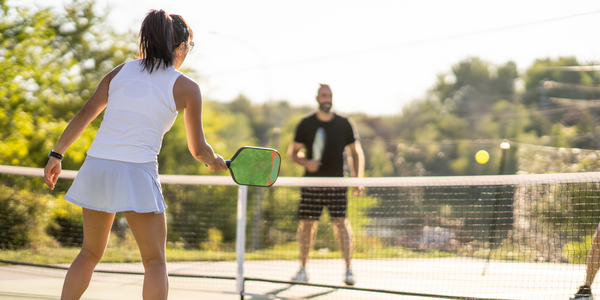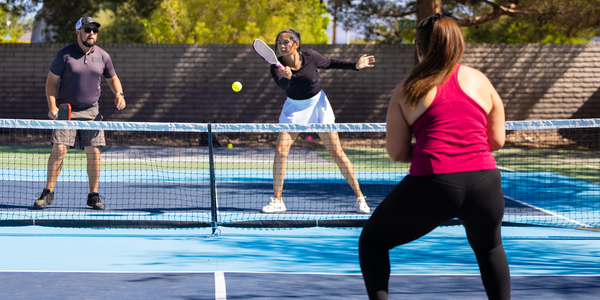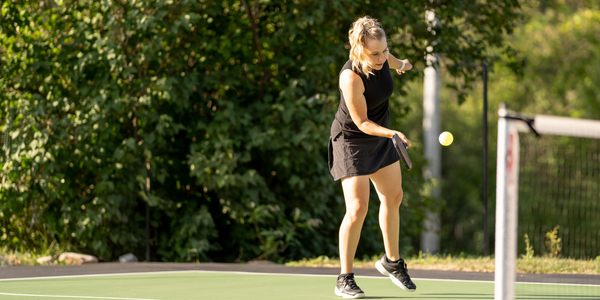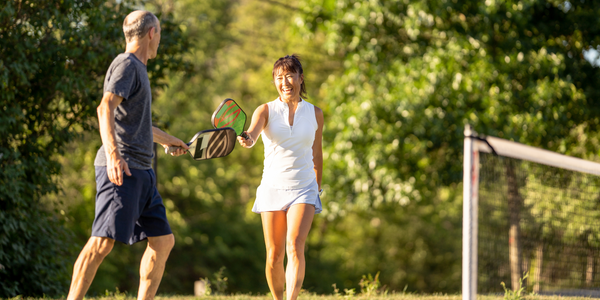The return of serve in pickleball is pivotal as it sets the tone for the rest of the point. Having a strong, effective return can provide a significant advantage by immediately putting pressure on the serving team. This guide delves into detailed tips and strategies to master the pickleball return of serve, ensuring you start each point with confidence and precision.
I. Importance of a Strong Return of Serve:
A robust return of serve is more than just hitting the ball back; it's about setting up your position in the game.
1. Establishing Early Advantage:
A solid pickleball return of serve puts immediate pressure on the serving team, giving you and your partner a strategic edge right from the start. Understanding this dynamic can help you make more impactful decisions during play.
2. Setting the Point’s Tempo:
Learning to return the serve confidently allows you to set the pace of the point. An assertive return forces the server to react to your game, letting you control the rally from the onset.
II. The Basic Stance and Grip:
Your stance and grip are foundational elements that affect the effectiveness of your pickleball return of serve.
1. The Ready Position:
Start with your feet shoulder-width apart and knees slightly bent. Hold the paddle in front of you, ready to move quickly in any direction, ensuring you're prepared for any serve.
2. Proper Grip:
Utilize the Continental grip for its flexibility, which is crucial for responding quickly to different types of serves. This grip enhances your ability to make quick, reactive shots.
III. Effective Return Strategies:
Developing a strategy for your returns can significantly impact your ability to dominate the game.
1. Depth is Key:
Aim to hit deep returns on the pickleball court. A deep return pushes the serving team back, giving you more time to position yourself strategically, especially near the non-volley zone.
2. Aim for Low Returns:
Keeping your returns low compels the serving team to hit upward, making it difficult for them to attack the ball aggressively. This tactic can lead to weaker returns from them, which you can exploit.
IV. The Sweet Spot - Timing and Placement:
Timing and placement are crucial for making your returns not just good, but great.
1. Proper Timing:
Strike the ball after it has reached its highest point in the bounce to maintain better control and accuracy. This timing ensures that your returns are both strong and strategically placed.
2. Targeting Weak Spots:
Direct your returns toward the opponent’s weaker areas, such as the backhand or less guarded spots. This strategy increases the likelihood of eliciting a weaker response, allowing you to take control of the rally.
V. Varied Returns to Keep Opponents Guessing:
Variety in your returns can prevent opponents from predicting your plays, making it harder for them to counter effectively.
1. Mixing Up Directions:
Alternate the direction of your returns to keep your opponents off-balance. This unpredictability can complicate their strategy and force errors.
2. Change of Pace:
Integrate a mix of slower, spin-heavy shots with fast-paced returns. This change of pace can unsettle the serving team, disrupting their rhythm and response timing.
VI. Use of Spin:
Adding spin to your returns can enhance their unpredictability and effectiveness.
1. Adding Spin to the Return:
Master different spins to make your returns more difficult to predict and return accurately. Spin can force opponents into uncomfortable positions, increasing your chances of winning the point.
VII. Advanced Techniques:
Incorporating advanced techniques into your returns can elevate your play and intimidate your opponents.
1. The Drive Return:
Execute a drive return for a fast, flat shot that puts the opponents on the defensive immediately. This aggressive return can shift the momentum in your favor.
2. The Lob Return:
Use a lob return occasionally to change the dynamics of the game. This return gives you time to advance your position and prepare for the next shot, while also pulling your opponents out of their comfort zone.
VIII. Drills for Enhancing Return of Serve:
Regular practice through specific drills can sharpen your skills and improve your pickleball return of serve.
1. Target Practice:
Engage in regular target practice to improve the accuracy and consistency of your returns. Setting targets on different areas of the court can help you work on both depth and precision.
2. Spin Practice:
Practice various types of spins in your returns. This not only adds diversity to your game but also helps you control how the ball behaves, making your returns more challenging for opponents.
3. Tim ed Returns:
Engage in drills that enhance your timing for striking the ball. These exercises should focus on hitting your returns at the optimal moment for maximum effectiveness, improving your rhythm and coordination during gameplay.
Elevating Your Game: Mastery of the Pickleball Return of Serve
Mastering the pickleball return of serve is crucial for enhancing your overall performance in the game. By integrating these insights into your practice, you will not only strengthen your return game but also augment your overall pickleball prowess, ensuring you are always a step ahead on the court.
1. Continuous Improvement:
Dedicate time to regular practice focusing on your return of serve. The more you practice, the more natural these movements and strategies will become, embedding them into your muscle memory.
2. Feedback and Adaptation:
Stay open to feedback from coaches or more experienced players and be willing to adapt your techniques. External insights can offer new perspectives and highlight areas for improvement that may not be evident from your viewpoint.
3. Integrative Practice:
Incorporate the footwork, timing, and strategic elements discussed into actual game scenarios as frequently as possible. Real-game practice will help you fine-tune your responses and make your effective return of serve second nature.
Securing the Advantage with Your Pickleball Return of Serve
The return of serve in pickleball can dramatically influence the flow and outcome of the game. By focusing on the detailed tips and practices outlined in this guide, you can transform your initial return into a formidable weapon in your pickleball arsenal.
Regular practice, strategic thinking, and continual learning are key to dominating the court and enjoying the game to its fullest. Embrace these principles, and watch as your confidence and skill in returning serves grow, making every game more competitive and enjoyable.


